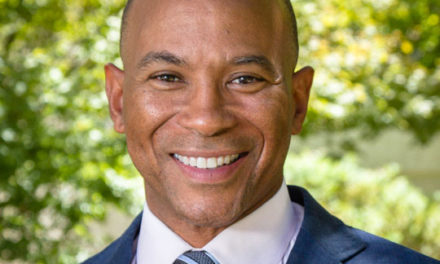School Daze
Militant union meets stumbling administration
By Craig Powell
June 2019
Fixing the problems at Sacramento City Unified School District will take more than adroit financial moves, prudent spending decisions and shared sacrifice.
While Sac City Unified faces state takeover for insolvency, another problem is the ruined relationship between the district and its teachers’ union, the Sacramento City Teachers Association. The parties can’t even speak to one another. A mediator keeps them in separate rooms during negotiations. The mediator plays shuttle diplomacy between them. I’ve seen high-conflict divorces exhibit less hostility.
I’ve seen high-conflict divorces exhibit less hostility.
Lately, the teachers union has been flinging unsubstantiated public accusations against the integrity of Superintendent Jorge Aguilar. The union has accused him of cheating the district of his time and financial conflicts of interest—baseless charges that seem calculated to worsen a toxic relationship.
Is it any wonder Sac City Unified has experienced an extraordinarily high superintendent turnover over the past decade?
Even when the two parties could negotiate face-to-face, the union’s tactics were ludicrous. While the district would send in a small team, the union would pile 60 people into the room. Such theatrics guaranteed union reps would posture to the crowd, rather than productively negotiate. The era of consensus ended once teachers started bringing audiences to bargaining sessions.
And it’s not as if the union is dealing with a school board dominated by anti-labor ideologues. On the contrary: the majority of school board members have been endorsed, funded and recruited by the union.
So teachers are at war with “their” handpicked board, although some Sac City Unified trustees have, in a testament to their integrity, demonstrated independence on policy and contract issues, particularly as the union has grown more militant.
Recent superintendents hired by the board have not been hostile to labor. Aguilar is a mild-mannered administrator whose primary agenda has been to promote equity and diversity in education.
Teacher union militancy is not a local phenomenon. We’re seeing a trend toward more aggressive job actions by teachers across the country, from Oklahoma to Oakland. But there’s a big difference between an assertive union and an antagonistic one. The working relationships between the Elk Grove and San Juan school districts and their unions are vastly superior to the battle-ready atmospherics that prevail in Sacramento.
San Juan Superintendent Kent Kern and union head Shannan Brown reportedly speak almost daily by phone. Elk Grove Unified and its teachers’ union have had a stable, productive relationship for years.
Part of the challenge is that the Sac City union is not accountable to anyone but rank and file membership. Moreover, its leaders have fed members a steady diet of negative information about the district and its leadership, which has led to militancy and alienation.
It’s neither healthy nor rational. Is it rational for union members to vote overwhelmingly for one-day strikes, which erase precious state funding while Sac City Unified is in the crosshairs of a state takeover?
This is not to say Sac City Unified administrators have been perfect. There’s a long history of poor decisions, weak skill sets and inadequate experience. And the current superintendent is not blame-free.
When grant funding ran out for some administrators in his first year on the job, Aguilar foolishly tapped the district’s general fund to pay their salaries in the hope that the grants would be renewed. He funded a $3.5 million summer school program the district could not afford. He spent $6 million to buy out vacation pay of certain employees, which will save money in the long run but swallowed cash during the current fiscal crisis.
Most critically, Aguilar and his inexperienced management team had a weak handle on the district’s finances when he negotiated the current contract with the teachers in November 2017. The deal, midwifed by Sacramento Mayor Darrell Steinberg, included significant raises for teachers but provided no concrete health care cost savings. It exacerbated the district’s already deteriorating finances.
It was a bad deal for Sac City Unified, made worse by vague terminology. The contract led to 18 months of acrimony, litigation, mediation and arbitration.
To avoid the appointment of a state receiver next February, Sac City Unified must eliminate a projected $28 million budget deficit, down from $35 million due to program and job cuts already adopted by the school board. The district must clear out an equally large budget deficit the following year.
According to district spokesman Alex Barros, Sac City Unified has sent tentative layoff notices to 30 administrators, 150 certificated employees (teachers, counselors, librarians) and 200 classified employees (janitors, bus drivers, office staff).
The district plans deep cuts to sports and arts programs, after-school activities, transportation and student support, including mental health services that intervene with students at risk of suicide.
Teachers’ union President David Fisher says the district should make deeper cuts in administrators and reduce the $76 million spent last year on consulting contracts, some of which are mandated by law.
There may be opportunities to reduce spending on transportation by outsourcing to Regional Transit. And there are creative options available to train and compensate teachers to become grant writers.
Some analysts have proposed that school districts pay “Average Daily Attendance” bonuses for teachers who increase student attendance in their classes. Sac City Unified has a 14-percent rate of chronic absenteeism. The state average is 9 percent. Absent students cost Sac City Unified millions of dollars in lost state revenue.
Another idea would be to tweak how teachers are compensated for post-graduate units and degrees. Currently, a 23-year senior teacher with a master’s degree and 39 education units receives $25,361 above the annual base of $66,285. A first-year teacher with the same degree and units earns an additional $1,165. Boosting the pay for new teachers would help solve an enduring problem: noncompetitive starting salaries compared to other local school districts.
The greatest savings opportunity is teacher health care costs. Sac City Unified teachers make no contribution to their Health Net health care plan, which covers themselves, their spouses and dependents. The district says it pays more than $30,000 annually for the health care costs of more than 550 teachers and their families, representing one of the highest per-pupil health care costs in the state.
Switching to a different health care plan, without any reduction in benefits, would save the district between $11 million and $16 million, according to one study. The district and teachers argue over how to deploy such savings.
The union claims the district agreed to hire more teachers, reduce class sizes and enhance student support services. The district asserts no agreement was reached, and wants any savings to help close the $26 million deficit next year.
Sac City Unified covers teacher health care costs after retirement. The $726 million unfunded liability for retiree health care is about 30 percent of the district’s $1.867 billion in total liabilities. Several options could help: higher teacher contributions while employed, premium requirements after retirement or tighter eligibility requirements. Retirees could be required to use Obamacare. Or trim benefits levels. Or all of the above.
Craig Powell is a retired attorney, businessman, community activist and president of Eye On Sacramento, a civic watchdog and policy group. He can be reached at craig@eyeonsacrament.org or (916) 718-3030.







































